Ready-to-grill marinated miso fish is something you'd see at the supermarket or basement food floor of department stores in Japan. Saikyo-yaki has long been one of my favorites when eating out in Tokyo. Until recently, I didn't realize just how easy it was to make at home from scratch. Turn your plain ol' fillet of cod into gold with just three magic ingredients.
Jump to Recipe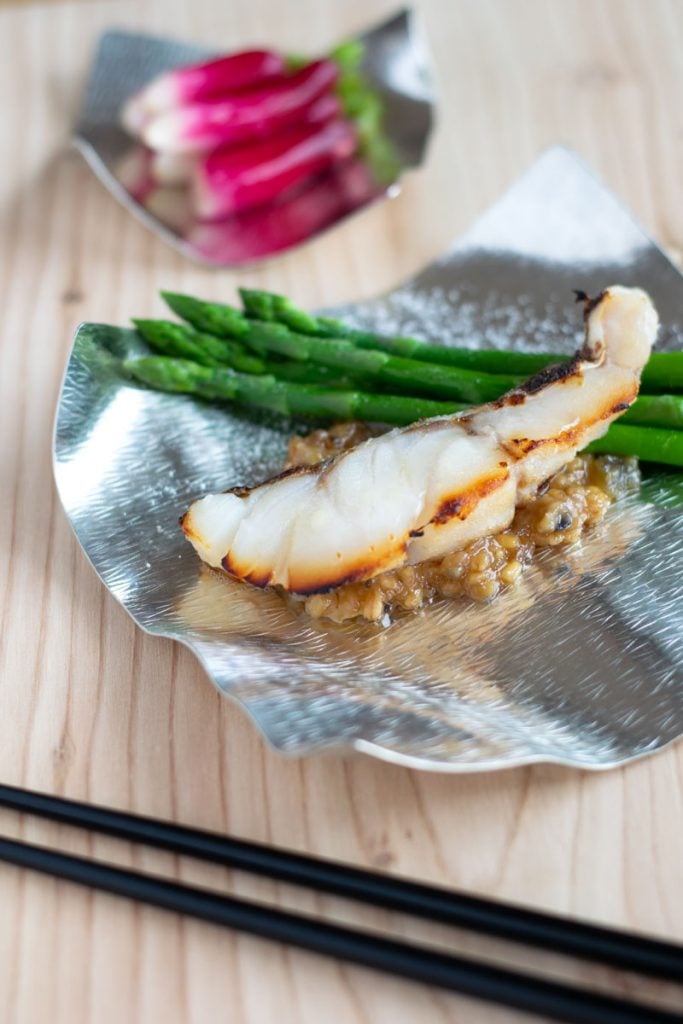
What is saikyo-yaki (miso-marinated fish)?
Back before refrigeration was invented, marinating fish in miso paste was one method to preserve fish used in Japan. Preservation was needed for transporting fresh catch inland from seaside fishing ports.
Ironically, for us modern day foodies, this curing process in miso ends up spoiling us with its incredible taste!
It leaves a fillet of cod or black cod tasting light and buttery, subtly sweet, and moist.
Saikyo(西京), written with the kanji for "west capital", refers to Kyoto, which once was the capital of Japan.
Yaki (焼) means grilled.
So essentially, saikyo-yaki is fish that's marinated in Kyoto-style saikyo miso and grilled to perfection.
In Japan, you'll see saikyo-yaki typically made with tara (cod), sawara (Spanish mackerel), gindara (black cod or sablefish), or salmon.
For the sake of availability outside of Japan, I chose to use regular cod for this recipe.
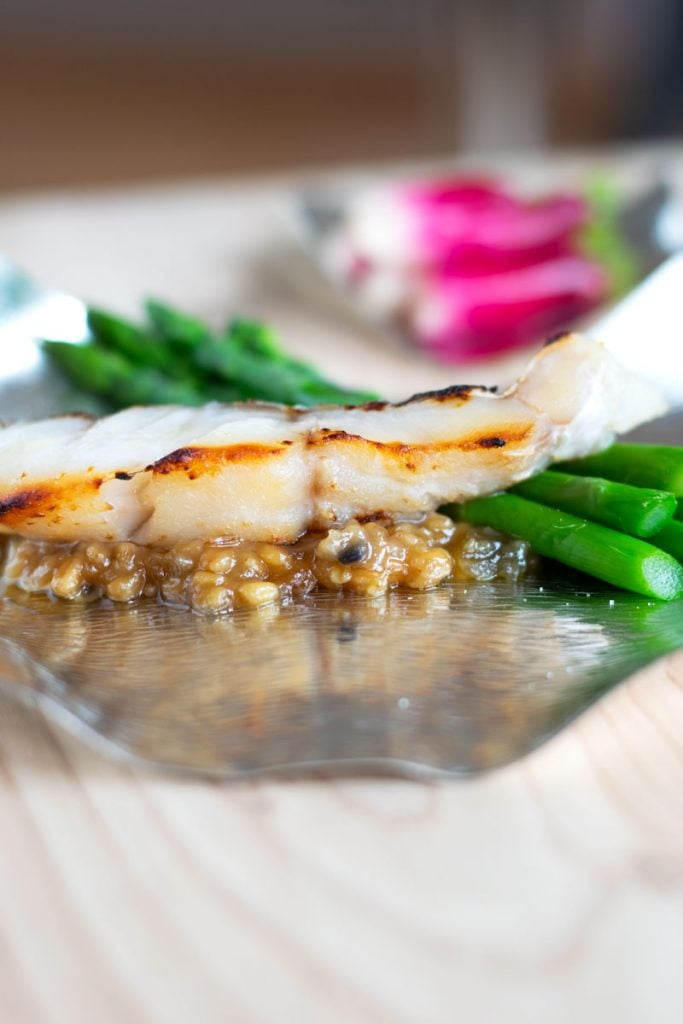
What is saikyo miso?
Miso is made from soybeans the have been fermented with a mix of salt and kōji.
There are different varieties of miso made in different regions in Japan.
Saikyo miso is the special style of miso that's used in Kyoto.
Saikyo miso is pale in color and light and creamy in texture. Compared to other varieties of miso, it's naturally sweet and milder in taste.
It also contains less sodium than typical red or yellow miso.
When Kyoto was the capital of Japan (794 to 1868), saikyo miso was treated as a special ingredient for the Imperial Palace during ceremonial feasts.
Nowadays, saikyo miso is considered an integral ingredient in Kyoto-style cuisine, which is known for its delicate, subtle flavors.
SAIKYO MISO VS. WHITE MISO
Don't worry if you can't get your hands on saikyo miso where you are in the world.
You can still try this recipe using white miso instead.
What's the difference?
White miso is still mild and sweet in taste. Though, it's not quite as sweet, smooth, and light in flavor as saikyo miso.
Saikyo miso is just a special variety of white miso.
Standard white miso (shiro miso) is more common, especially outside of Japan.
WHERE TO BUY SAIKYO MISO?
If you're aiming for real authentic taste to impress your guests of honor, you should be able to find saikyo miso on Amazon. It's just pricey.
The saikyo miso that I used (pictured below) was about 5 or 6 dollars.
If you are lucky enough to live near a Japanese supermarket, they will know what you mean if you ask for saikyo miso (pronounced sigh-kyo mi-so) to make saikyo-yaki at home. They may or may not carry it.
In Japan, most local supermarkets will have at least one brand of saikyo-miso in stock, except for small supermarkets like Aeon "My Basket" or Seijo Ishii.
ALTERNATIVE TO SAIKYO MISO
Yesterday when I looked in the Asian section at a supermarket in my hometown, they had Hikari brand organic white miso.
Hikari is good quality. If you can't find saikyo miso, I would go with this as your plan B.
When using white miso as an alternative, Japanese chefs would probably suggest adding a small amount of granular sugar to the marinade.
Personally, I usually avoid adding sugar to anything if it's just a weekday meal just for me.
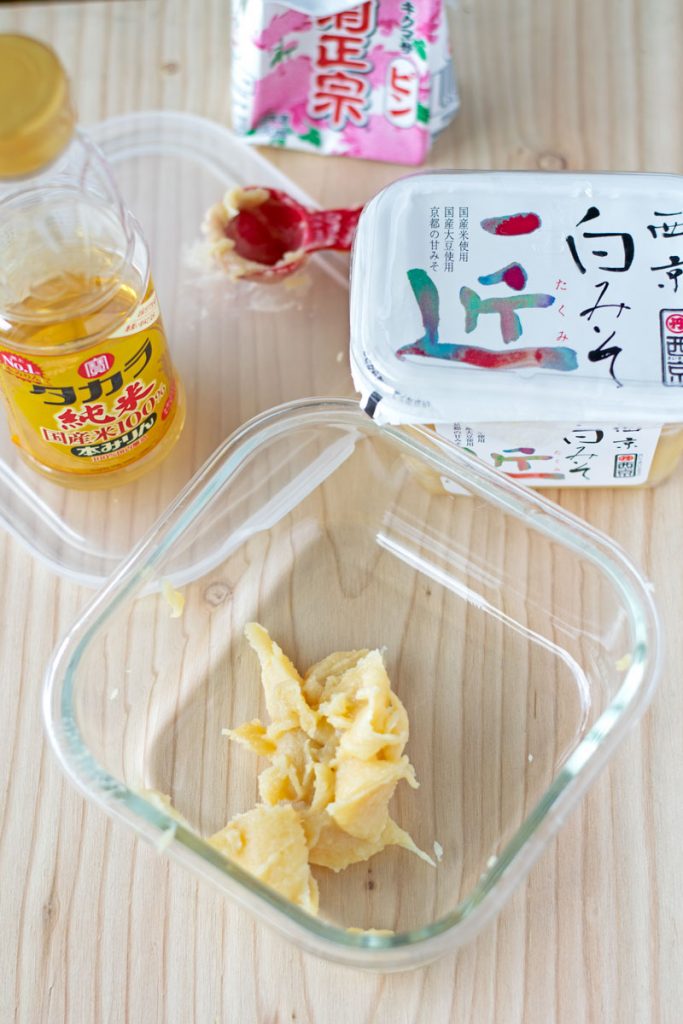
Nobu Black Cod
Nobu is a famous Japanese restaurant in New York started by Chef Nobu Matsuhisa and his friend, Robert De Niro.
I've been to Nobu in Tokyo one time.
Now there are Nobu restaurants all over the world.
From what I read, the miso-marinaded black cod is Nobu's signature dish. If my memory serves me, I think we did order it, not knowing it was his signature anything.
I remember it being really, really good.
WHY IS MY MISO COD BETTER THAN NOBU'S?
Nobu is a pretty high-end restaurant ($$-$$$).
In New York, you could pay over $30 dollars for his black cod miso.
In Tokyo, you can find saikyo-yaki at many restaurants. It doesn't have to be as fancy as Nobu.
I've had really good saikyo-yaki at lunch in Azabu Juban for 12 dollars and 4 dollars at an izakaya in Shibuya.
Now you know how to make Nobu's signature dish at home for a fraction of the cost.
This miso fish marinade is so simple that you don't need a world famous celebrity chef to eat gourmet.
Really, in Japan I'd consider grilled fish to be "home cooking".
Now, your miso cod can be better than Nobu's.
You are the star chef!
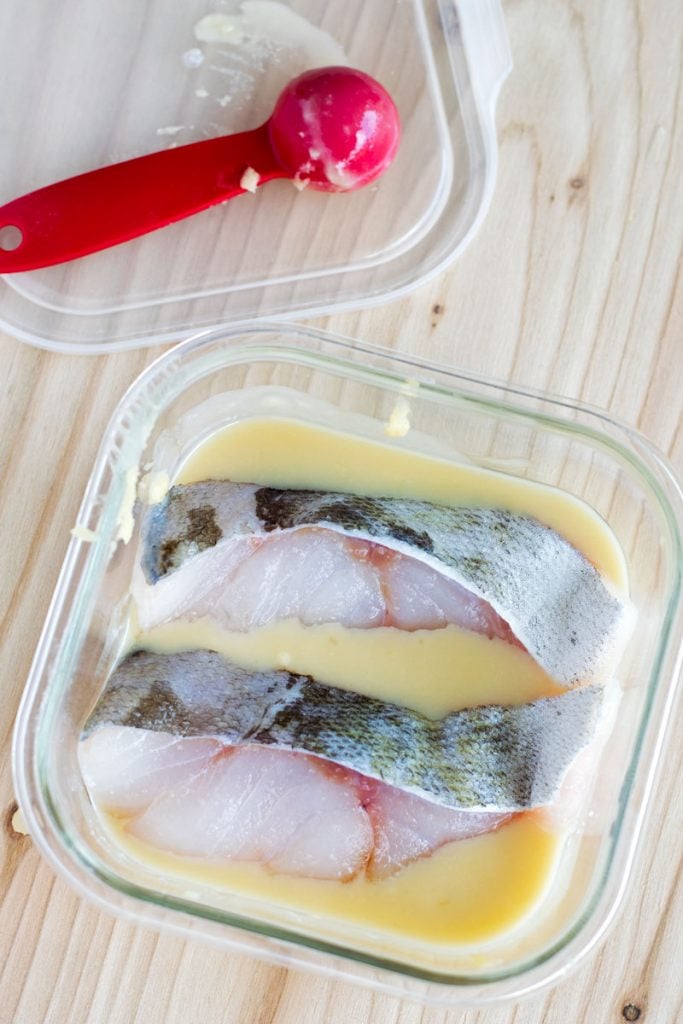
Yaki miso salmon, miso cod – what fish goes best with the marinade?
I've started asking around what fish people prefer for saikyo-yaki.
Sawara (Spanish mackerel) tends to be a favorite and gindara (black cod).
These two fish are sold more at a premium. Unless you are a celebrity or the fisherman who caught them, it's something you might eat only on a special occasion in Japan.
Salmon and cod from Hokkaido are more reasonably priced fish that I might cook for dinner during the weekday. Both are still wonderful.
I'm sure some people would prefer salmon. I would have a hard time picking a favorite.
When I make saikyo-yaki, I will choose whichever fish looks the freshest at the supermarket depending on the season.
I also will marinate two different kinds of fish in the same container.
For example, I'll have saikyo-yaki made with salmon for dinner and cook cod at the time for tomorrow's lunch bento.
You can also use this same marinade for chicken or pork as well.
INGREDIENTS FOR MISO FISH
3 ingredient marinade
Saikyo Miso: Kyoto-style white miso– if saikyo miso is not available where you live, regular white miso can be used as an alternative.
Mirin: Japanese sweet cooking wine– I am not particular about the brand. On the bottle, it may also say 'hon-mirin'.
Sake: I recommend using cheap sake or cooking sake. Save the good stuff for drinking.
Sugar (optional): Many recipes for saikyo-yaki call for a small amount of added sugar. I make it without sugar and don't feel the added sugar is absolutely necessary. The saikyo miso and mirin already provide some level sweetness.
KITCHEN TOOLS NEEDED
Glass container with cover: You will need some sort of glass container or plastic Tupperware to keep the fish in the refrigerator while it's marinating.
Measuring spoon: I use a tablespoon or half tablespoon.
Fish grill: In a Japanese kitchen, a fish grill is standard. If you don't live in Japan, don't worry! My uncle said he used a cast iron pan and an oven, following the recipe in Nobu's cookbook.
Large skillet: If you choose to add asparagus as a side like I did, you'll need a large-sized skillet or at least a pot to boil asparagus.
Sharp knife: I cut off the bottoms of the asparagus.
Spatula or cooking chopsticks: You'll need something to carefully flip the fish.
Cheese cloth (optional): In Japan, I was taught to wrap up the fish during the curing process. I didn't have a thin cloth to use and didn't see any specific drawbacks to not using one.
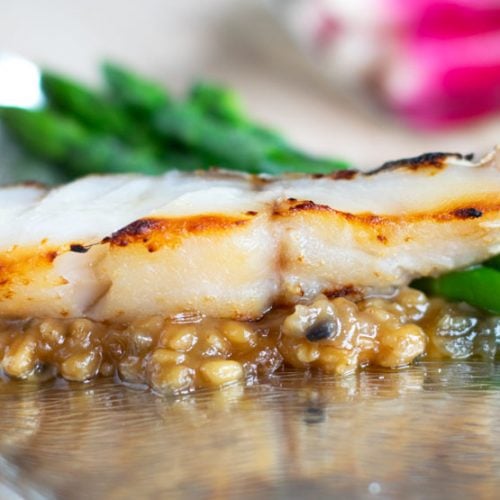
Miso Fish (saikyo-yaki)
Ingredients
Fish and Miso Marinade
- 3 tablespoon saikyo miso or white miso
- 1 tablespoon sake
- 1 tablespoon mirin
- 2 fillets cod or your choice of fish
- sea salt to lightly cover fish
Side Dish
- 1 bunch fresh asparagus
- 1 pinch sea salt to season
- 2 tablespoon moromi miso
Instructions
Marinade for Fish
- Add the saikyo miso, sake, and mirin into a small glass pan.
- Mix the ingredients together with a spoon until smooth.
- Set the marinade aside.
- Rinse the fish fillets with cold water.
- Pat fillets dry with paper towel.
- Lightly cover both sides of fillets with salt.
- Add both fillets to the glass pan. Use a spoon or gently turn over the fish to cover both sides of fillets with the marinade.
- Cover the pan with a lid and keep in the refrigerator overnight.
Grilling fish
- Preheat fish grill at medium heat or oven (varies by cooking method).*
- Lightly wipe off most of the miso marinade.
- After your grill heats up for a few minutes, add fish to the center of the grill.
- Once the top of the fish fillets begin to brown (3 - 4 min), turn over fillets using a wooden chopsticks or spatula.
- Cook until the other side begins to brown (2 - 3 min).
- With chopstick or fork, check to see that the inside of the fillets are fully cooked (white in color and not translucent).
- Remove from stove and serve hot.
Asparagus with Moromi Miso
- Trim off the ends of the asparagus.
- Bring one inch of salted water to a boil in a large skillet.
- Cook asparagus for 3-5 minutes, just until tender. It depends on the thickness of the spears. Test tenderness by poking with a fork.
- Drain water.
- With a spoon, spread the moromi miso into the middle of your plate.
- Place asparagus spears on top of the miso with the tips all pointing one direction.
- Season with sea salt.
- Then, place your hot fillet of fish on the front portion of the moromi miso with one end overlapping the the asparagus.
Notes
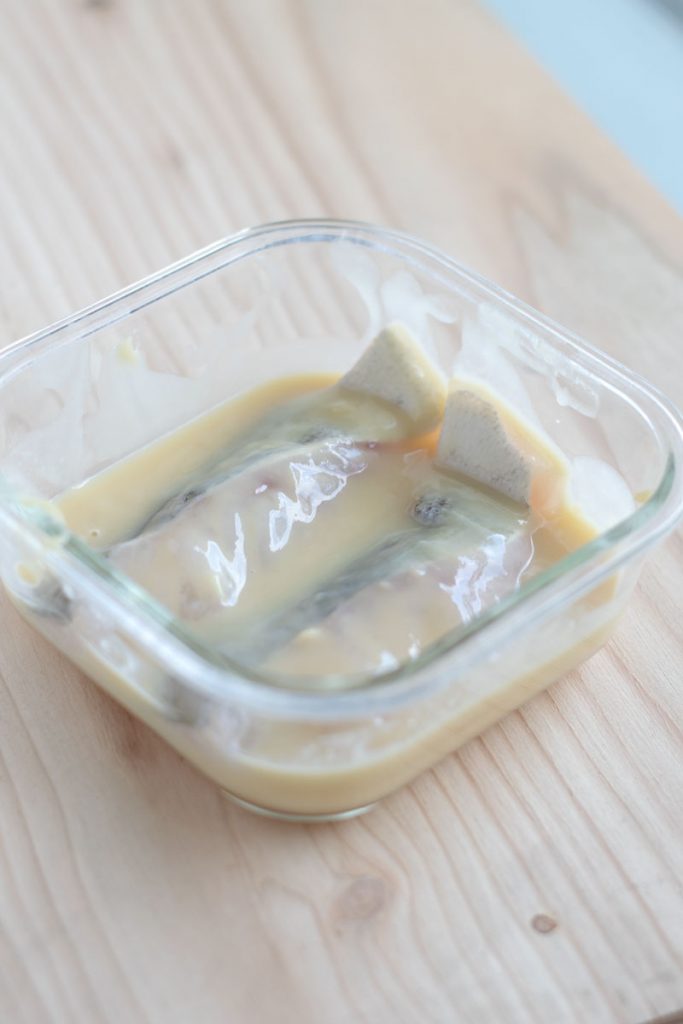
What do you eat with miso cod (fish)?
A general rule to follow for a traditional Japanese meal (te shoku) is to target all your taste buds: sweet, sour, salt, bitter, and umami (savory).
Another rule to thumb followed in a Japanese kitchen is to include variety of color. This is not just for beautiful presentation– it also helps ensure that your body is getting properly nourished with a variety of vitamins and minerals.
More often than not, you'll see saikyo-yaki garnished with a thin red and white pickled ginger sprouts called hajikami shoga.
This adds some sour and salt to satisfy your palette.
These pinkish red springs of ginger are often used in the presentation of high-end Japanese cuisine or paired with grilled fish. Like the ginger served with sushi, it can also be used to cleanse your pallet.
As this ingredient is not widely available unless you grow your own ginger or order online, I decided to go with alternative side: asparagus with moromi miso and a small side of baby pickled daikon radish.
You will also see grilled fish garnished with seasonal leaves such as Japanese maple. Obviously, this is not meant to be eaten.
Asparagus went really well with the light miso taste of the fish. I think it would especially go well with saikyo yaki miso salmon.
Following the rule of 5 tastes, I suggest at least adding some sort of pickled vegetable as a small side.
Garnish with some color.
And perhaps add a small slice of citrus or some grated daikon oroshi.
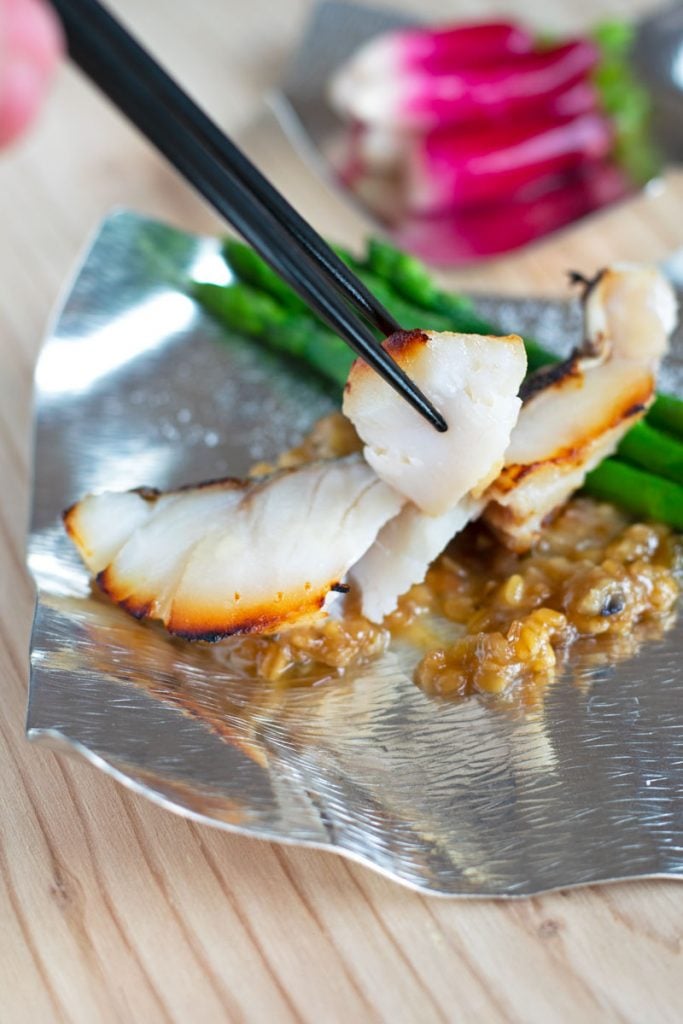
FREQUENTLY ASKED QUESTIONS:
1. Is miso a fish?
Just to clear up any confusion, "miso fish" is not a type of fish. It's not a species.
This recipe is for white fish fillets that are marinated in miso. Salmon fillets are also wonderful marinated in miso.
It's a classic Japanese recipe called saikyo-yaki.
2. What is the purpose of miso?
In the old days, marinating fish in miso was a means of preserving fresh fish. Miso is most well-known for being the indispensable ingredient for making miso soup.
Nowadays, miso is used to marinade ingredients like fish and meat to give it a rich, buttery taste and depth of flavor.
Because miso is a fermented food, it's also good for your health besides its high salt content.
3. What is miso made out of?
There are different types of miso: red miso, shiro miso, saikyo miso, etc.
Different regions of Japan are known for different types of miso.
All types of miso are made from fermented soybeans. The soybeans are mixed with salt and koji. Koji is the same mold that’s used to make sake or fermented vegetables.
It’s the additional ingredients that vary from one type of miso to the next. For example, red miso paste is fermented with barley or other grains.
Shiro miso is fermented with barley and sometimes a small percentage of rice.
4. Why do you use paper towels to dry the fish before adding it to the miso mixture?
Patting dry fish with paper towel helps prevent the fish from becoming tough or mushy.
5. Can you reuse the excess marinade?
I don't anticipate that there would be enough excess marinade to reuse. You may be able to add more miso, sake, and mirin to the small amount that's left over.
In the past, I have reused the marinade.
You could possibly add two more fillets to the marinade, in case you have enough left over.
It's also wonderful to marinade chicken and pork. If you are reusing the marinade after fish, I don't think it would make your meat taste fishy.
That's my guess but please let me know!
6. What's the difference between miso glaze, miso sauce, and miso marinaded?
A miso sauce could be used as a dipping sauce, a glaze, a base to make a salad dressing, a stir-fry sauce, or as a marinade.
A miso glaze is a coating of sauce on the surface to add flavor to meat or fish.
And last, a miso marinade is a coating that meant to infuse into the food over a period of time.
7. How do you store miso?
Unopened containers can be stored at room temperature. Once you open it, keep miso refrigerated.
The lesson I learned...
Author’s note:
I’ve found that every recipe for my blog teaches me a new lesson.
Every creation is the result of a process of trial and error, a string of successes and flops.
More and more, I feel like these recipes are not coming from me.
They aren't my recipes.
Ok, let me explain what I mean and how this blog post came to be.
This is how it began:
First of all, I ordered saikyo-yaki and the izakaya I like to go to practically every weekend in Shibuya.
Yum. I remembered how much I like fish marinated in miso and wanted to learn how to make it at home.
I looked up some recipes online and realized just how easy it was to make:
3 simple ingredients.
Queen's Isetan, the supermarket I stop at on my way home every day after school had beautiful fresh fillets of cod from Hokkaido.
I tried the salmon as well.
Then, on the second to last day of school, I was given these gorgeous malleable metal plates from the twins in my 2nd grade class (pictured above).
Naturally, I wanted a new "tabletop" for pictures that would match with these beautiful plates.
I found this piece of unfinished wood for 100 yen (about 1 dollar - pictured above).
The guy at the wood shop said I could darken the wood with an oil finish like I was initially looking for and couldn't find for less than 60 dollars.
And I decided not too.
At one point, I saw grilled fish with miso and asparagus in a flyer from my mailbox-
the exact same picture appeared in my Instagram feed.
The same week, Kokoro Cares posted this on Instagram.
I took it as a sign and sketched a plan in my recipe idea book.
Then, the "My Basket" supermarket near home had moromi miso that caught my eye.
Queen's Isetan at Shinagawa Station had asparagus when the other two supermarkets didn't.
It was probably late in the season.
Then, this is the real kicker.
When I came back to Wisconsin, we a family "happy hour" on Zoom.
I ended up asking my uncle if he's ever been to Nobu in Chicago. He tells me that he got some black cod from a friend and can give me some.
My uncle went on to say that he made Nobu's miso black cod using the recipe from his cookbook. And he can give me some of his leftover miso.
Do you see what I mean? This is in Wisconsin, U.S.A.!
How many strings of coincidences can one have in life before it starts to feel like something or someone else is pulling the strings?
More and more, I'm starting to believe that I'm not choosing these recipes.
These recipes are choosing me.
Have you ever experienced synchronicities like this before?
Let me know in the comments below!
The Master sees things as they are,
without trying to control them.
She let's them go their own way,
and resides at the center of the circle.
-Lao Tsu in the Tao Te Ching


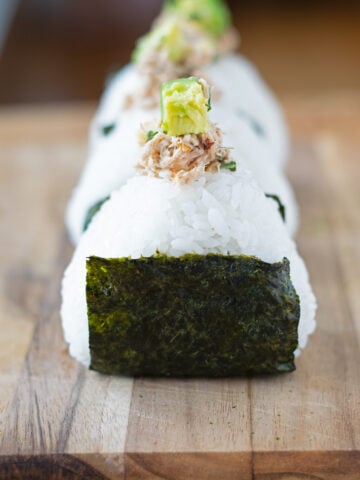


Leave a Reply